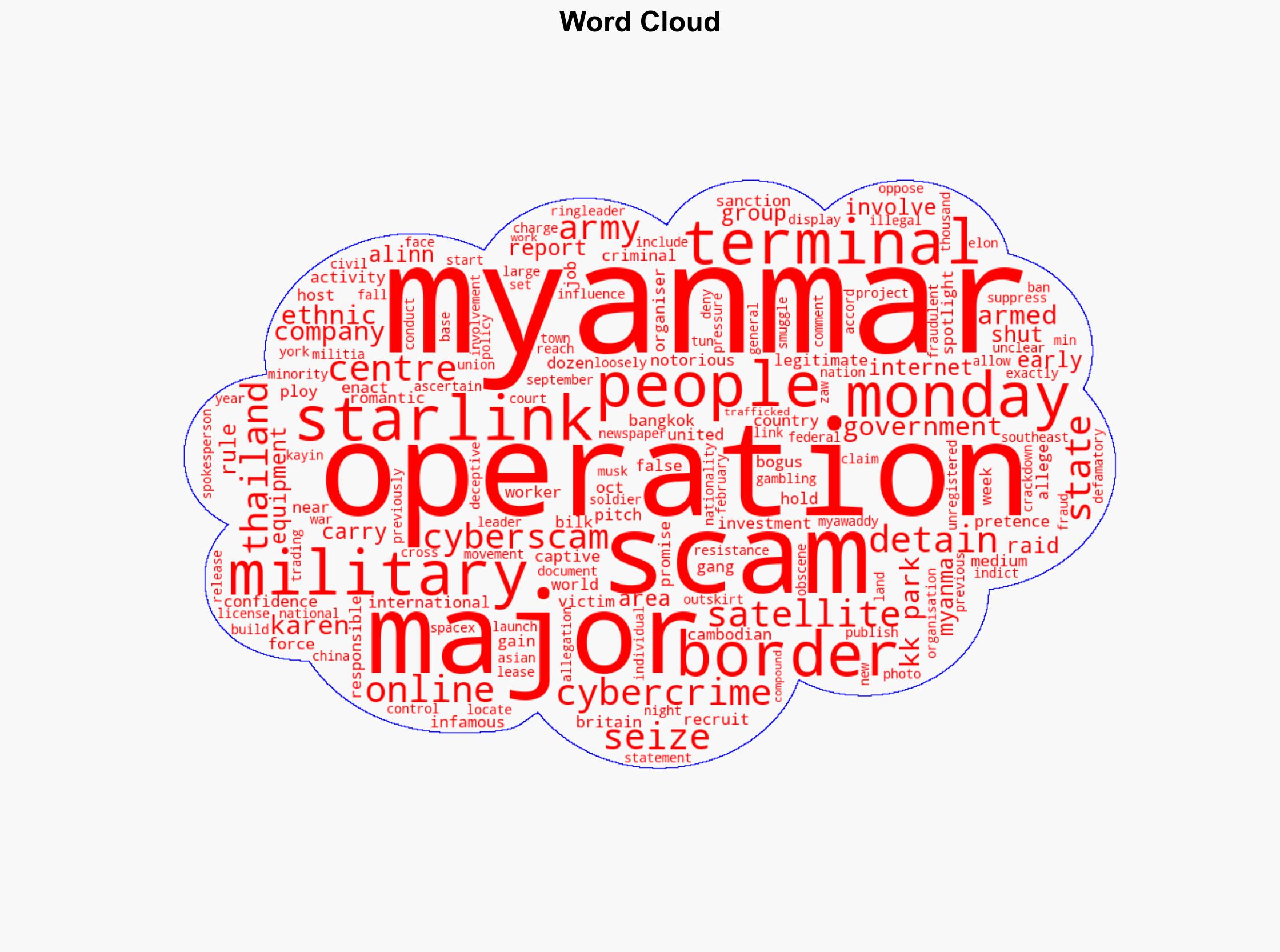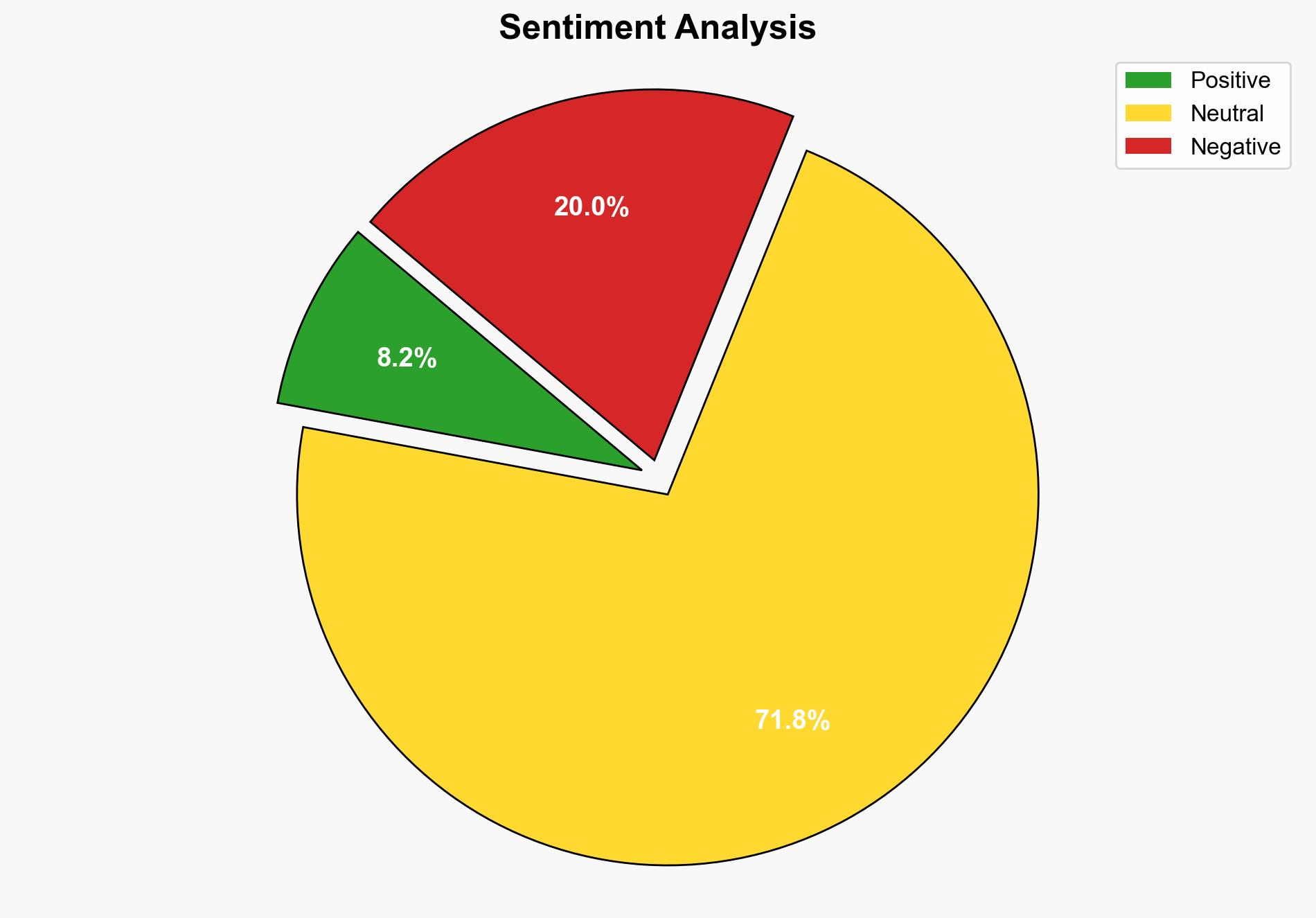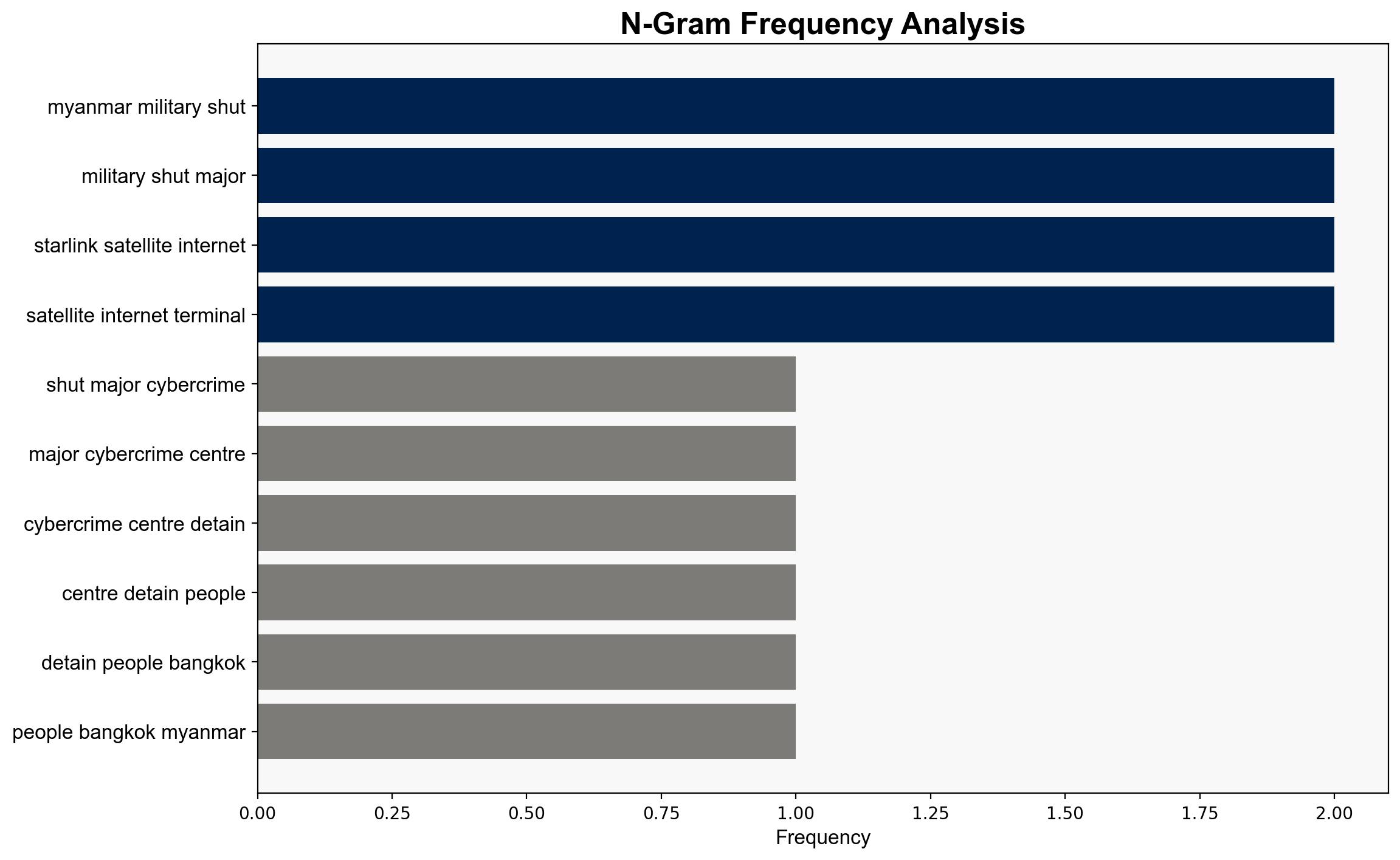Myanmar military shuts down major cybercrime centre detains over 2000 people – CNA
Published on: 2025-10-21
Intelligence Report: Myanmar military shuts down major cybercrime centre detains over 2000 people – CNA
1. BLUF (Bottom Line Up Front)
The Myanmar military’s shutdown of a major cybercrime center near the Thai border suggests a strategic move to assert control over illicit activities and potentially improve international relations. The most supported hypothesis is that the military aims to demonstrate its capability to manage cybercrime independently, possibly to mitigate external pressures and sanctions. Confidence in this hypothesis is moderate due to limited transparency and potential underlying motives. Recommended action includes monitoring Myanmar’s cyber policies and international responses to gauge shifts in regional cybercrime dynamics.
2. Competing Hypotheses
1. **Hypothesis A**: The Myanmar military’s operation is primarily a genuine effort to combat cybercrime and improve its international standing, particularly in response to recent sanctions by the United States and Britain.
2. **Hypothesis B**: The operation is a strategic maneuver to consolidate power and control over regions with significant ethnic minority influence, using the guise of cybercrime suppression to justify military presence and actions.
Using ACH 2.0, Hypothesis A is moderately supported by the timing of the operation following international sanctions and the seizure of advanced technology like Starlink terminals. Hypothesis B is supported by the location’s ethnic minority dynamics and historical military strategies in Myanmar.
3. Key Assumptions and Red Flags
– **Assumptions**: It is assumed that the military’s actions are primarily motivated by cybercrime suppression rather than political control. Another assumption is that the seized technology was used exclusively for illicit activities.
– **Red Flags**: The lack of transparency about the detainees’ identities and the exact nature of the operations raises questions about potential human rights abuses. The involvement of ethnic minority groups and their denial of participation in scams could indicate deeper political motives.
4. Implications and Strategic Risks
The operation could lead to increased tensions between the military and ethnic minority groups, potentially escalating into broader conflict. The crackdown may also disrupt regional cybercrime networks, affecting economic activities linked to these operations. Internationally, Myanmar’s actions could influence its diplomatic relations, particularly with countries affected by these scams.
5. Recommendations and Outlook
- Monitor Myanmar’s cyber policies and military actions in ethnic regions to assess shifts in control and influence.
- Engage with regional partners to strengthen cybersecurity measures and share intelligence on cross-border cybercrime activities.
- Scenario Projections:
- Best: Myanmar successfully reduces cybercrime, improving its international image and relations.
- Worst: Escalation of conflict with ethnic groups, leading to regional instability.
- Most Likely: Continued military operations under the guise of cybercrime suppression, with mixed international responses.
6. Key Individuals and Entities
– Major General Zaw Min Tun
– Karen National Union
– Starlink (SpaceX)
7. Thematic Tags
national security threats, cybersecurity, counter-terrorism, regional focus





